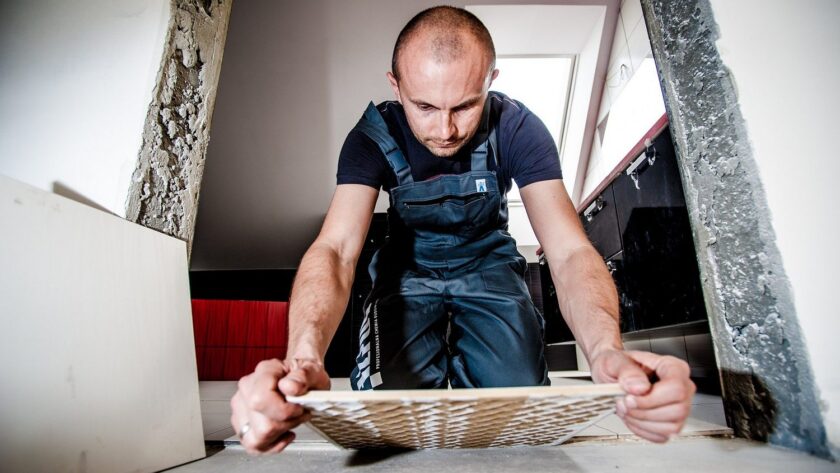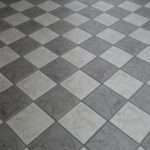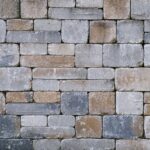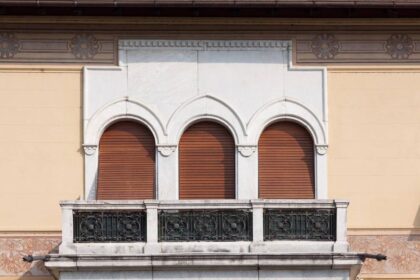Floor tiles, i.e. ceramic tiles, are a material that gives many arrangement options during the renovation or finishing of the house. The variety of shapes, patterns and colors makes it possible to match them to virtually any type of interior, not only in a very traditional, but also in an extremely modern climate. When considering tiles for the floor in the kitchen, vestibule or bathroom or on the terrace or balcony, it will be worth paying attention to at least a few issues.
Floor tiles – types
Floor tiles are usually made of a mixture of clay and sand, as well as mineral agents and coloring oxides, which are fired and finished after molding. The finish of the tiles can add gloss (in the case of polished and glazed tiles) or matte (engobed or unglazed tiles). If we mean tiles, our first association will be terracotta and glaze. Glazed tiles are tiles that cannot be laid on the floor, because they are more fragile and less durable than terracotta – that’s why they are mainly used as a wall finish, as well as a shower tray or bathtub casing.
- http://www.e-bizo.pl/jak-wziac-rozwod/
- https://www.hipkart.pl/jak-myc-samochod-na-myjni-bezdotykowej/
- https://www.plating.pl/najlepsza-blacha-trapezowa/
A common raw material used to finish the floors will be terracotta, i.e. made of clay, as well as glazed tiles with high strength and resistance to all kinds of loads. The method of kneading the terracotta contributes to the fact that these tiles are also characterized by low water absorption, thanks to which they do not absorb stains and can be easily kept clean – which is of great importance, especially in the kitchen, where the formation of stains on the floor is not a concern it’s too hard – even the greatest perfectionists sometimes spill coffee or drip tomato sauce.
However, it should be borne in mind that terracotta is not suitable for outdoor use, for example on a terrace or balcony, because it will not be resistant to sub-zero temperatures and will therefore deteriorate faster.
Better strength parameters than terracotta have gres, i.e. tiles made of quartz and clay or kaolin, dry pressed. Gres is more resistant and durable than terracotta, which is why it can also be used outdoors, for example as a material for finishing terraces. Gres tiles can also be a very good imitation of other materials, such as stone or wood – thanks to which you can make an effective-looking arrangement at a low cost, for example in a rustic climate. The disadvantage of stoneware is its high water absorption, which is why it is much more susceptible to staining and more difficult to clean.
The next raw material for floor tiles will be clinker, which is made of clay with the addition of dyes. If we decide to buy glazed clinker tiles, we have a much wider choice of patterns and colors. However, if we care about a more minimalist, subdued color scheme, we can choose glazed clinker.
Floor tiles can also be divided into rectified and calibrated. Calibration is the division of tiles into groups of similar dimensions. This means that not every tile in the selected batch will be identical – there may be small differences in size. So if we want all tiles to be identical, the rectified version will be better. Rectification is based on trimming the edges of the tile or grinding, so as to achieve the same size of all pieces in the package.
Distinguishing calibrated and rectified tiles is not too difficult: rectified tiles have sharpened edges, while those calibrated, on the contrary, are rounded. The differences can also be seen in the price: rectified tiles will certainly be more expensive.
Floor tiles – how to choose?
Regardless of the type, floor tiles offered by various companies may have different properties. Therefore, when making a purchase, we should check the following points:
-
-
- resistance to chemicals,
- the level of their abrasion,
- resistance to various loads,
- resistance to impact or mechanical damage,
- degree of hardening and durability,
- water absorption.
-
The choice of floor tiles and the quality of their finish
The durability and quality of floor tiles is certainly an important, but not the only factor that should be taken into account. It will also be important to match the tiles to the style of the entire interior in which we want to arrange them. Before we start browsing websites and online catalogs, it will be good to think carefully beforehand and design the entire decor in the kitchen or bathroom. Thanks to this, you can save time – you will be able to sort the offers in such a way as to view only those tiles that will fit into the decor planned by us.
For example, if we like minimalism and want a raw result, we can choose tiles that imitate concrete. It will be a much cheaper solution than real concrete slabs, and at the same time ceramic tiles will be easier to install and clean later.









